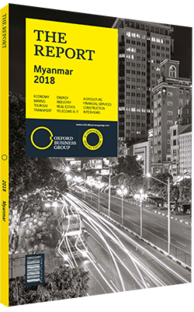U Thant Sin Maung, Union Minister, Ministry of Transport and Communications: Interview

Interview: U Thant Sin Maung
What measures should be adopted to attract more foreign investment in transport infrastructure?
U THANT SIN MAUNG: Private participation has been allowed in the port sector since 1995. Currently, 90% of the port terminals at Port of Yangon are being operated by foreign and local private companies. As for the aviation sector, the international airports of Yangon and Naypyidaw are operated by local private firms and Mandalay International Airport is operated by the Mitsubishi-JALUX consortium. We are looking to further improve the sector with new tendering processes for public-private partnerships (PPPs) to operate the airports of Heho, Kawtaung and Mawlamyaing. There is also foreign participation in the shipbuilding industry with a joint venture between Myanmar Shipyards and Vietnam’s Dong A Shipbuilding. Likewise, in the communications sector, Telenor, Ooredoo, Mytel and MPT have been granted operator licences.
To attract private investment into our railway and inland water transport sector, we are working to formulate a strategy and business plan that respects market-oriented premises. In order to harness the interest of private investors in Myanmar, the government needs to enact the Corporatisation Law and roll out a clear legal framework for PPPs, which is currently being discussed with the Ministry of Planning and Finance.
Which reforms could boost the competitiveness of rail and river transport across Myanmar?
THANT SIN MAUNG: Road transport plays a dominant role in domestic transportation, carrying more than 90% of freight and passenger traffic. To expand the nation’s transport options, the government is working on measures to improve rail and water transport in line with the National Transport Master Plan, which was formulated with the assistance of the Japan International Cooperation Agency (JICA). In line with the plan, the Yangon-Mandalay railway and Yangon circular railway are being upgraded with Japan’s Official Development Assistance. Support from other international partners is taking place for the Mandaly-Mytkyina rail line with funding from Korea’s EDCF, and for the Yangon-Pyay rail line with an Asian Development Bank loan.
Works on the Yangon-Mawlamyine rail line are being funded directly by the state. Meanwhile, the development of freight train stations in both Yangon and Mandalay is also moving forward through operations that involve the private sector. We expect that this investment will make our rail services more competitive and a viable alternative to road transport. Furthermore, after decades of inadequate maintenance and management, the government has launched initiatives to leverage the opportunities offered by the country’s 6650 km of navigable waterways.
Together with the World Bank we launched the Ayeyarwaddy Integrated River Basin Management Project. There are also plans to establish six inland domestic ports along the Ayeyarwaddy and Chindwin rivers in line with the National Transport Master Plan to handle growing demand for container and cargo transport. Mandalay is the first priority port following the conclusion of the feasibility study by JICA in 2014.
How can the country position itself to fully benefit from the Belt and Road Initiative?
THANT SIN MAUNG: Myanmar welcomes the initiative and is seeking to make the most of the opportunities it provides, particularly in areas such as infrastructure development. The government is committed to political and economic reform in order to attract more foreign investment in key sectors. A great number of reforms target the improvement of the nation’s infrastructure in accordance with the National Transport Master Plan and the National Logistics Master Plan, the latter of which is being formulated. Both plans can utilise the initiative and support the concept of connecting Myanmar with China, along with India and the Mekong Basin, through practical and long-term win-win relations.
You have reached the limit of premium articles you can view for free.
Choose from the options below to purchase print or digital editions of our Reports. You can also purchase a website subscription giving you unlimited access to all of our Reports online for 12 months.
If you have already purchased this Report or have a website subscription, please login to continue.

